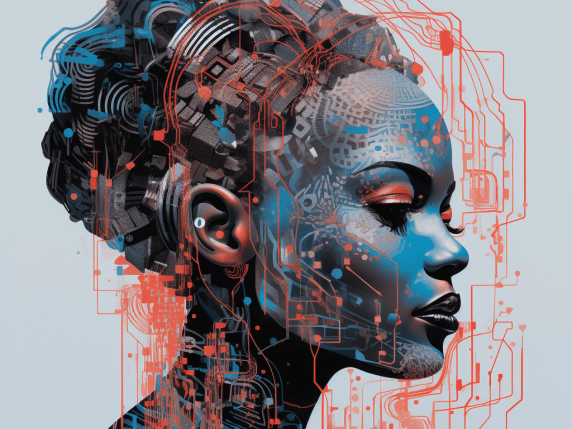
The Unseen Bias: How AI Algorithms Are Erasing Black Artists’ History
In the realm of art and design, a new form of bias is emerging, one that is not perpetrated by humans but by the very technology we’ve created. Artificial Intelligence (AI), lauded for its potential to revolutionize various sectors, is under scrutiny for its inadvertent role in perpetuating discrimination.
Black artists are raising their voices against an unsettling trend where AI algorithms are erasing their history. The issue lies in machine-learning algorithms, which tech companies acknowledge can perpetuate discrimination and need improvement. These algorithms, designed to learn and improve over time, reflect the biases present in the data they are fed.
Artificial Intelligence (AI) operates based on the data it is trained on. If the data is biased, the AI will inherently adopt these biases, leading to skewed and discriminatory outcomes. This is the crux of the issue faced by Black artists.
In the context of Black artists, AI bias manifests in several ways:
- Erasure in Digital Archives: AI algorithms are often used to categorize and archive digital content. If these algorithms are trained predominantly on artworks from non-Black artists, they may fail to correctly categorize or even recognize artwork created by Black artists. This can lead to their work being overlooked or misclassified in digital archives, effectively erasing their contributions.
- Bias in Recognition Software: AI-powered recognition software, used in everything from social media platforms to digital art platforms, may be less effective at recognizing and appropriately tagging artwork created by Black artists if the software has been predominantly trained on data representing non-Black artists.
- Discrimination in Recommendation Systems: Many digital platforms use AI to recommend content to users. If the AI has been trained on biased data, it may be less likely to recommend artwork created by Black artists, limiting their visibility and opportunities for exposure.
- Bias in Artistic Value Assessment: Some AI systems are used to assess the value or quality of artwork. If these systems are trained on data that undervalues the work of Black artists, they may perpetuate this bias, affecting their work’s perceived value and marketability.
Addressing these biases requires a concerted effort to diversify the data used to train AI systems, ensuring that it accurately represents the breadth and diversity of human creativity. One artist, Stephanie Dinkins, has been vocal about the issue, highlighting the bias in her Brooklyn-based practice. The problem is not isolated but reflects a larger issue of representation and bias in the tech industry.
As we move forward in this digital age, it’s crucial to address these biases and ensure that AI is a tool for inclusivity and representation rather than a medium perpetuating discrimination.
Thought-Provoking Questions and Insights
- The Bias in AI: How can we ensure that the data used to train AI algorithms represents all races, cultures, and backgrounds to prevent such biases?
- The Role of Tech Companies: What measures are tech companies taking to address and rectify these biases in their AI algorithms?
- The Impact on Art: How does this erasure of history by AI algorithms affect the representation and recognition of Black artists in the art world?
Conclusion
The issue of AI bias against Black artists is a pressing concern that calls for immediate attention. As AI continues to permeate various aspects of our lives, it is essential that it serves as a tool for inclusivity and representation, not a medium that perpetuates discrimination. The voices of Black artists, like Stephanie Dinkins, are crucial in highlighting these biases and advocating for change. The tech industry, as the creators and custodians of AI, bear the responsibility to address and rectify these biases. This can be achieved by diversifying the data used to train AI systems, ensuring it accurately represents the breadth and diversity of human creativity. As we move forward in this digital age, let’s strive to ensure that the realm of art and design remains a space for all voices to be heard and all histories to be acknowledged.
